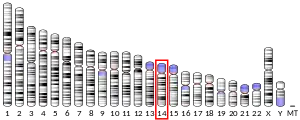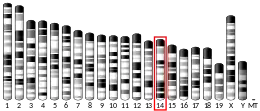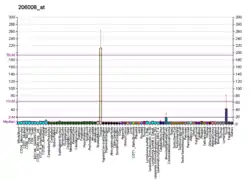| TGM1 | |||||||||||||||||||||||||||||||||||||||||||||||||||
|---|---|---|---|---|---|---|---|---|---|---|---|---|---|---|---|---|---|---|---|---|---|---|---|---|---|---|---|---|---|---|---|---|---|---|---|---|---|---|---|---|---|---|---|---|---|---|---|---|---|---|---|
| |||||||||||||||||||||||||||||||||||||||||||||||||||
| Identifiers | |||||||||||||||||||||||||||||||||||||||||||||||||||
| Aliases | TGM1, ARCI1, ICR2, KTG, LI, LI1, TGASE, TGK, transglutaminase 1 | ||||||||||||||||||||||||||||||||||||||||||||||||||
| External IDs | OMIM: 190195 MGI: 98730 HomoloGene: 306 GeneCards: TGM1 | ||||||||||||||||||||||||||||||||||||||||||||||||||
| |||||||||||||||||||||||||||||||||||||||||||||||||||
| |||||||||||||||||||||||||||||||||||||||||||||||||||
| |||||||||||||||||||||||||||||||||||||||||||||||||||
| |||||||||||||||||||||||||||||||||||||||||||||||||||
| |||||||||||||||||||||||||||||||||||||||||||||||||||
| Wikidata | |||||||||||||||||||||||||||||||||||||||||||||||||||
| |||||||||||||||||||||||||||||||||||||||||||||||||||
Protein-glutamine gamma-glutamyltransferase K is a transglutaminase enzyme that in humans is encoded by the TGM1 gene.[5][6]
Function
Keratinocyte transglutaminase enzymes serve to specifically catalyze the development of the cornified cell envelope, a defining characteristic of epidermal keratinocytes that have undergone the termination of differentiation.[7][8] The specific cross linkages formed by keratinocyte transglutaminase are between n^ε-(γ-glutamyl)lysine residues which develop into isopeptide protein-protein linkages that adds to the stabilization of the cornified cell envelope.[9]
In terminally differentiated stratified squamous epithelia, the cornified cell envelope protein linkages allow for a structurally fortified, yet flexible (15 nm thick) layer to the place of the cell membrane, acting as a highly insoluble barrier.[10] The expression of the enzyme is most highly exhibited along the biological membrane of these fully formed epithelial cells, preventing the cell from undergoing chemical and or physical damages. A lesser amount of enzymatic activity, of the TGK genes (5-10%), lies within the cytoplasmic fraction of such cells, allowing for finalization of the cross-linkaging necessary for the full functionality of the cornified cell envelope.
Pathology
A deficiency is associated with ichthyosis lamellaris.[11] Epidermal transglutaminase is the autoantigen, in humans, of dermatitis herpetiformis.
A study on the mutation of keratinocyte transglutaminase (TGK) came to conclude that those affected with ichthyosis lamellaris, present a substantial deficit in keratinocyte transglutaminase activity.[8] It was concluded that those afflicted, display a decrease in activity of the enzyme, as a result of a lessened amount of transcription of the human TGK gene. This lack of protein stems from a common mutation of the TGK gene, which exists in two possible variants, found at the TGM1 locus on the 14q11 chromosome, as exhibited amongst all the subjects of the study. Such mutations were of the compound heterozygous or homozygous variety, which leads to the expression of lamellar ichthyosis as a result of abnormal cross-linkaging of the cornified cell envelope.
See also
References
- 1 2 3 ENSG00000285348 GRCh38: Ensembl release 89: ENSG00000092295, ENSG00000285348 - Ensembl, May 2017
- 1 2 3 GRCm38: Ensembl release 89: ENSMUSG00000022218 - Ensembl, May 2017
- ↑ "Human PubMed Reference:". National Center for Biotechnology Information, U.S. National Library of Medicine.
- ↑ "Mouse PubMed Reference:". National Center for Biotechnology Information, U.S. National Library of Medicine.
- ↑ Grenard P, Bates MK, Aeschlimann D (August 2001). "Evolution of transglutaminase genes: identification of a transglutaminase gene cluster on human chromosome 15q15. Structure of the gene encoding transglutaminase X and a novel gene family member, transglutaminase Z". The Journal of Biological Chemistry. 276 (35): 33066–78. doi:10.1074/jbc.M102553200. PMID 11390390.
- ↑ "Entrez Gene: TGM1 transglutaminase 1 (K polypeptide epidermal type I, protein-glutamine-gamma-glutamyltransferase)".
- ↑ Eckert RL, Sturniolo MT, Broome AM, Ruse M, Rorke EA (March 2005). "Transglutaminase function in epidermis". The Journal of Investigative Dermatology. 124 (3): 481–92. doi:10.1111/j.0022-202X.2005.23627.x. PMID 15737187.
- 1 2 Huber M, Rettler I, Bernasconi K, Frenk E, Lavrijsen SP, Ponec M, et al. (January 1995). "Mutations of keratinocyte transglutaminase in lamellar ichthyosis". Science. 267 (5197): 525–8. Bibcode:1995Sci...267..525H. doi:10.1126/science.7824952. PMID 7824952. S2CID 43324754.
- ↑ Eckert RL, Sturniolo MT, Broome AM, Ruse M, Rorke EA (March 2005). "Transglutaminase function in epidermis". The Journal of Investigative Dermatology. 124 (3): 481–92. doi:10.1111/j.0022-202X.2005.23627.x. PMID 15737187.
- ↑ Kim SY, Jeitner TM, Steinert PM (January 2002). "Transglutaminases in disease". Neurochemistry International. 40 (1): 85–103. doi:10.1016/s0197-0186(01)00064-x. PMID 11738475. S2CID 23418803.
- ↑ Hennies HC, Küster W, Wiebe V, Krebsová A, Reis A (May 1998). "Genotype/phenotype correlation in autosomal recessive lamellar ichthyosis". American Journal of Human Genetics. 62 (5): 1052–61. doi:10.1086/301818. PMC 1377076. PMID 9545389.
Further reading
- Phillips MA, Stewart BE, Rice RH (February 1992). "Genomic structure of keratinocyte transglutaminase. Recruitment of new exon for modified function". The Journal of Biological Chemistry. 267 (4): 2282–6. doi:10.1016/S0021-9258(18)45875-9. PMID 1346394.
- Kim IG, McBride OW, Wang M, Kim SY, Idler WW, Steinert PM (April 1992). "Structure and organization of the human transglutaminase 1 gene". The Journal of Biological Chemistry. 267 (11): 7710–7. doi:10.1016/S0021-9258(18)42573-2. PMID 1348508.
- Polakowska RR, Eickbush T, Falciano V, Razvi F, Goldsmith LA (May 1992). "Organization and evolution of the human epidermal keratinocyte transglutaminase I gene". Proceedings of the National Academy of Sciences of the United States of America. 89 (10): 4476–80. Bibcode:1992PNAS...89.4476P. doi:10.1073/pnas.89.10.4476. PMC 49105. PMID 1350092.
- Schroeder WT, Thacher SM, Stewart-Galetka S, Annarella M, Chema D, Siciliano MJ, et al. (July 1992). "Type I keratinocyte transglutaminase: expression in human skin and psoriasis". The Journal of Investigative Dermatology. 99 (1): 27–34. doi:10.1111/1523-1747.ep12611394. PMID 1351505.
- Yamanishi K, Inazawa J, Liew FM, Nonomura K, Ariyama T, Yasuno H, et al. (September 1992). "Structure of the gene for human transglutaminase 1". The Journal of Biological Chemistry. 267 (25): 17858–63. doi:10.1016/S0021-9258(19)37122-4. PMID 1381356.
- Kim HC, Idler WW, Kim IG, Han JH, Chung SI, Steinert PM (January 1991). "The complete amino acid sequence of the human transglutaminase K enzyme deduced from the nucleic acid sequences of cDNA clones". The Journal of Biological Chemistry. 266 (1): 536–9. doi:10.1016/S0021-9258(18)52469-8. PMID 1670769.
- Yamanishi K, Liew FM, Konishi K, Yasuno H, Doi H, Hirano J, Fukushima S (March 1991). "Molecular cloning of human epidermal transglutaminase cDNA from keratinocytes in culture". Biochemical and Biophysical Research Communications. 175 (3): 906–13. doi:10.1016/0006-291X(91)91651-R. PMID 1673840.
- Polakowska R, Herting E, Goldsmith LA (February 1991). "Isolation of cDNA for human epidermal type I transglutaminase". The Journal of Investigative Dermatology. 96 (2): 285–8. doi:10.1111/1523-1747.ep12464554. PMID 1704039.
- Phillips MA, Stewart BE, Qin Q, Chakravarty R, Floyd EE, Jetten AM, Rice RH (December 1990). "Primary structure of keratinocyte transglutaminase". Proceedings of the National Academy of Sciences of the United States of America. 87 (23): 9333–7. Bibcode:1990PNAS...87.9333P. doi:10.1073/pnas.87.23.9333. PMC 55159. PMID 1979171.
- Candi E, Melino G, Mei G, Tarcsa E, Chung SI, Marekov LN, Steinert PM (November 1995). "Biochemical, structural, and transglutaminase substrate properties of human loricrin, the major epidermal cornified cell envelope protein". The Journal of Biological Chemistry. 270 (44): 26382–90. doi:10.1074/jbc.270.44.26382. PMID 7592852.
- Mariniello L, Esposito C, Di Pierro P, Cozzolino A, Pucci P, Porta R (July 1993). "Human-immunodeficiency-virus transmembrane glycoprotein gp41 is an amino acceptor and donor substrate for transglutaminase in vitro". European Journal of Biochemistry. 215 (1): 99–104. doi:10.1111/j.1432-1033.1993.tb18011.x. PMID 7688299.
- Russell LJ, DiGiovanna JJ, Rogers GR, Steinert PM, Hashem N, Compton JG, Bale SJ (March 1995). "Mutations in the gene for transglutaminase 1 in autosomal recessive lamellar ichthyosis". Nature Genetics. 9 (3): 279–83. doi:10.1038/ng0395-279. PMID 7773290. S2CID 27032821.
- Huber M, Rettler I, Bernasconi K, Frenk E, Lavrijsen SP, Ponec M, et al. (January 1995). "Mutations of keratinocyte transglutaminase in lamellar ichthyosis". Science. 267 (5197): 525–8. Bibcode:1995Sci...267..525H. doi:10.1126/science.7824952. PMID 7824952. S2CID 43324754.
- Amendola A, Lombardi G, Oliverio S, Colizzi V, Piacentini M (February 1994). "HIV-1 gp120-dependent induction of apoptosis in antigen-specific human T cell clones is characterized by 'tissue' transglutaminase expression and prevented by cyclosporin A". FEBS Letters. 339 (3): 258–64. doi:10.1016/0014-5793(94)80427-3. PMID 7906657. S2CID 39872629.
- Kim SY, Kim IG, Chung SI, Steinert PM (November 1994). "The structure of the transglutaminase 1 enzyme. Deletion cloning reveals domains that regulate its specific activity and substrate specificity". The Journal of Biological Chemistry. 269 (45): 27979–86. doi:10.1016/S0021-9258(18)46883-4. PMID 7961731.
- Steinert PM, Kim SY, Chung SI, Marekov LN (October 1996). "The transglutaminase 1 enzyme is variably acylated by myristate and palmitate during differentiation in epidermal keratinocytes". The Journal of Biological Chemistry. 271 (42): 26242–50. doi:10.1074/jbc.271.39.24105. PMID 8824274.
- Laiho E, Ignatius J, Mikkola H, Yee VC, Teller DC, Niemi KM, et al. (September 1997). "Transglutaminase 1 mutations in autosomal recessive congenital ichthyosis: private and recurrent mutations in an isolated population". American Journal of Human Genetics. 61 (3): 529–38. doi:10.1086/515498. PMC 1715945. PMID 9326318.
- Tarcsa E, Marekov LN, Andreoli J, Idler WW, Candi E, Chung SI, Steinert PM (October 1997). "The fate of trichohyalin. Sequential post-translational modifications by peptidyl-arginine deiminase and transglutaminases". The Journal of Biological Chemistry. 272 (44): 27893–901. doi:10.1074/jbc.272.44.27893. PMID 9346937.
- Petit E, Huber M, Rochat A, Bodemer C, Teillac-Hamel D, Müh JP, et al. (1998). "Three novel point mutations in the keratinocyte transglutaminase (TGK) gene in lamellar ichthyosis: significance for mutant transcript level, TGK immunodetection and activity". European Journal of Human Genetics. 5 (4): 218–28. doi:10.1159/000484767. PMID 9359043.
- Iwasaki W, Nagata K, Hatanaka H, Inui T, Kimura T, Muramatsu T, et al. (December 1997). "Solution structure of midkine, a new heparin-binding growth factor". The EMBO Journal. 16 (23): 6936–46. doi:10.1093/emboj/16.23.6936. PMC 1170297. PMID 9384573.
External links
- TGM1+protein at the U.S. National Library of Medicine Medical Subject Headings (MeSH)




